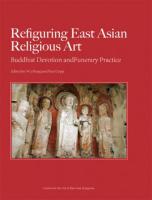Biography
My first book, The Body Incantatory, is a study of Buddhist incantation and amulet practices in Tang China, centered in both textual and archaeological evidence. I am currently revising a draft of a second book with the working title “The Ritualist’s Seal: Object, Practice, and Knowledge in China, ca. 100 to 1000.” It’s an exploration of stamp seals in Chinese religious practice and thought from the Eastern Han into the Northern Song (that is, roughly the first millennium CE). Seals are interesting to me because of the ways they so clearly intertwine conceptual thought, bodily practice, and material object—objects and their bodily logics are in the mind, when thinking in terms of seals (as people often did in first millennium CE China), and the mind’s ways are in the body, when stamping them. Because of this, the study of religious seals demands, even more than most things, an attentive interdisciplinarity. Early versions of parts of this project can be seen in three articles: “Manuscript Culture as Ritual Culture in Late Medieval Dunhuang: Buddhist Talisman Seals and their Manuals,” “Seals as Conceptual and Ritual Tools in Chinese Buddhism, ca. 700-1000, CE,” and “Deity Seals and the Securing of the Grave in Eastern Han China.”
I work with graduate students across programs, especially those interested in projects on premodern China that combine approaches of material culture, religion, and intellectual history.
In my teaching in the College I am devoted to the question of what the Humanities should be, now, in an age when ideas of “the human” are under such pressure. These pressures include not only the older ones of the intellectual globalization of the university, where the idea of a single true concept of the human has become harder (indeed, for some of us, impossible) to maintain, but also newer pressures from realities of anthropogenic climate breakdown, scientific breakthroughs revealing the intelligences of animals and plants, and the oncoming wave of so-called artificial intelligence. I explore these issues in two courses, especially: one in what I think of as comparative eco-humanities: “Nature & Dao,” and another that offers a traditional “great books” seminar focused on China in a comparative context: “Self-Cultivation and the Way in Traditional China.”
Selected Publications
- “Deity Seals and the Securing of the Grave in Eastern Han China,” forthcoming in an Oriental Institute series volume titled Sealing Theories and Practices, edited by Delphine Poinsot.
- Dhāraṇī and Mantra in Ritual, Art, and Text. Special issue of the International Journal of Buddhist Thought & Culture (30.2), co-edited with Youn-mi Kim. December, 2020.
- “Guest Editor’s Introduction: Dhāraṇī and Mantra in Ritual, Art, and Text,” International Journal of Buddhist Thought & Culture 30.2 (2020), 7-16.
- Refiguring East Asian Religious Art: Buddhist Devotion and Funerary Practice, a volume co-edited with Wu Hung, Art Media Resources, 2019
- “The Material of East Asian Religions: A View from Buddhist Studies,” in Refiguring East Asian Religious Art: Buddhist Devotion and Funerary Practice, ed. Wu Hung and Paul Copp (Art Media Resources, 2019), 309-315.
- “Writing Buddhist Liturgies at Dunhuang: Hints of Ritualist Craft,” in Language and Religion, ed. Robert Yelle, et al. (Berlin: De Gruyter, 2019), 68-86
- “Seals as Conceptual and Ritual Tools in Chinese Buddhism, ca. 700-1000, CE,” The Medieval Globe 4.1 (2018), 15-48.
- The Body Incantatory: Spells and the Ritual Imagination in Medieval Chinese Buddhism. (Columbia University Press, 2014; paperback edition, 2018).
- “Anointing Phrases and Narrative Power: A Tang Buddhist Poetics of Incantation.” History of Religions 52.2 (2012), 142-172.
- “Manuscript Culture as Ritual Culture in Late Medieval Dunhuang: Buddhist Seals and Their Manuals.” Cahiers d’Extrême-Asie 20 (2011), 193-226.
- "Altar, Amulet, Icon: Transformations in Dhāraṇī Amulet Culture, 740-980." Cahiers d’Extrême-Asie 17 (2008): 239-264.
Courses
Graduate Seminars:
- Reading Chinese Religious Texts
- Dunhuang Studies
- Manuscripts, Material Culture, and Ritual Practice
- Sources and Methods in the Study of Premodern Chinese Religion
College Courses
- Comparative Eco-Humanities: Nature & Dao
- Self-Cultivation and the Way in Traditional China
- Dunhuang and the Silk Roads
- Material Culture and Ritual in Chinese Religion



